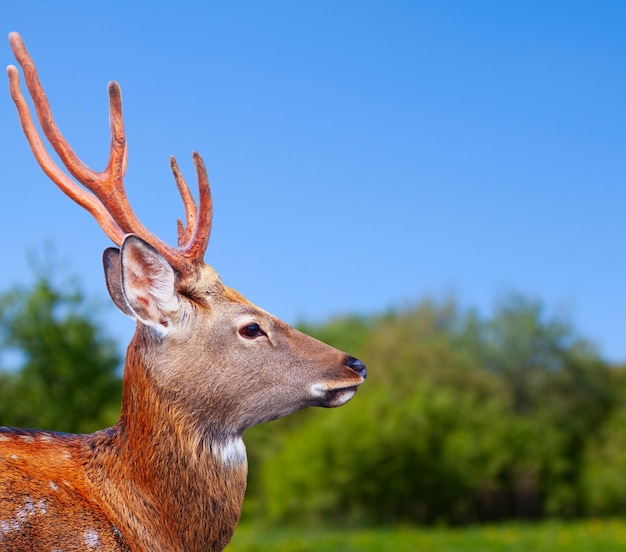Fascinating Facts about Deer

Deer are herbivorous animals that primarily feed on plants and shrubs.
Male deer, known as bucks, grow antlers every year and shed them in the winter.
The antlers of a deer can reach impressive sizes, with some spanning up to six feet in width.
Deer have excellent hearing and can detect high-frequency sounds that humans cannot.
The white-tailed deer is the most common species of deer found in North America.
Deer have a keen sense of smell, which they use to identify potential predators or rivals.
During the rutting season, male deer engage in fierce battles to establish dominance and win mating rights.
Deer are excellent swimmers and can cross rivers and lakes effortlessly.
In some cultures, deer symbolize grace, beauty, and gentleness.
Deer possess a natural camouflage that helps them blend into their surroundings and avoid detection.
The gestation period for a female deer, known as a doe, is around 200 days.
Deer have specialized teeth for chewing vegetation, referred to as molars and premolars.
The small, white tail of a deer signals alarm or danger to other deer within its group.
Deer have a strong sense of spatial memory and can navigate vast territories.
Fawns, or baby deer, have distinctive white spots on their fur to help camouflage them from predators.
Deer are crepuscular animals, meaning they are most active during dawn and dusk.
The average lifespan of a deer in the wild is around 6-14 years, depending on the species.
Fascinating Facts about Deer part 2
Deer have a complex social structure, with males forming bachelor groups and females living in matrilineal family units.
A group of deer is called a herd.
Deer communicate with each other through a variety of vocalizations, including grunts and snorts.
Deer are agile runners and can reach speeds of up to 40 miles per hour when necessary.
Deer have a four-chambered stomach to aid in the digestion of plant material.
The eyesight of a deer is highly adapted to low light conditions, allowing them to see clearly in dimly lit environments.
Deer have an excellent sense of balance, which enables them to navigate through rough terrain and steep slopes.
The skeletal structure of deer is lightweight yet strong, providing them with flexibility and agility.
Some species of deer migrate seasonally to find better food sources and breeding grounds.
The gentle demeanor of deer has made them popular subjects in art and literature throughout history.
Deer are important to ecosystems as they help disperse seeds through their feces and browsing habits.
The antlers of a deer are actually made of bone and are one of the fastest-growing tissues in the animal kingdom.
Deer have a specialized gland, called the preorbital gland, located near their eye for scent marking.
Deer have a unique chewing mechanism called rumination, which helps them extract maximum nutrients from their food.
The presence of deer can indicate the health of a forest ecosystem, as they are sensitive to environmental changes.
Deer have cylindrical hooves that provide traction and stability on various terrains, including snow and mud.
The coat color of deer varies depending on the species, ranging from reddish-brown to gray or even black.
Deer are known to exhibit certain behaviors, such as rubbing their antlers on trees, to mark their territories.
The mating ritual of deer involves elaborate displays by males, including vocalizations and scent marking.
Deer have been hunted by humans for their meat and antlers for thousands of years.
Deer have a highly developed circulatory and respiratory system to support their active lifestyle.
Some species of deer, such as the musk deer, have specialized teeth, called tusks, instead of antlers.
Deer have adapted to survive in various climates, from the freezing cold of the Arctic to the sweltering heat of the desert.
The eyes of a deer are positioned on the sides of their head, providing them with a wide field of vision.
Deer have a unique ability to raise and lower their body temperature to conserve energy during harsh winters.
Deer can jump over obstacles up to 8 feet high, thanks to their powerful hind legs.
Deer have a flight response to danger, often fleeing when they detect a potential threat.
The economic value of deer extends beyond hunting, as they attract tourists and contribute to ecotourism in many regions.

